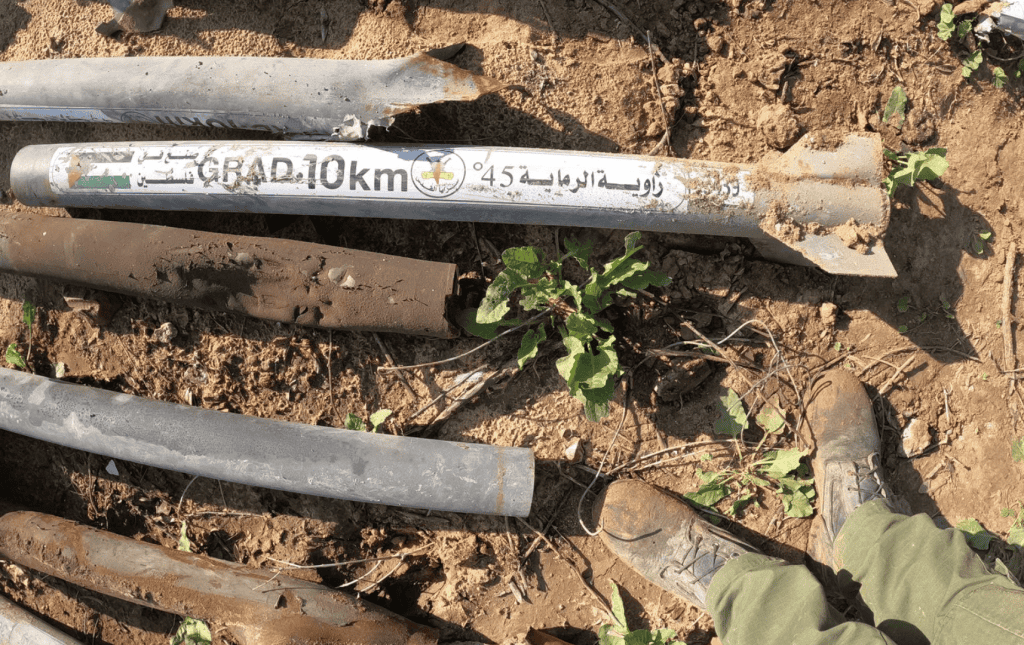
Israel has seen a significant reduction in rocket fire from Hamas and other terrorist groups inside Gaza over a 72-hour period. Sirens sounded on the border of Gaza on January 21 in the afternoon, but since then an app that tracks sirens shows there have been no sirens along the border as of the evening of January 24 in Israel. This is an unprecedented calm along the border and for Israeli cities since the war began with Hamas firing thousands of rockets on October 7.
The reduction in rocket fire may be due to Hamas running low on rockets or preserving what it has left for a large salvo. For example, Hamas launched rockets on New Year’s just after midnight, firing rockets all across central issue to show that it still had this capability. The reduction in rocket fire is also likely due to the expanded IDF operations to include targeting and uncovering rocket launch sites. Hamas has lost control of a swath of Gaza, including northern Gaza, parts of central Gaza and the city of Khan Younis. Hamas has also lost more than 9,000 of its terrorists with thousands more wounded. Overall, Hamas has fired more than 9,000 rockets that entered Israeli territory, per IDF data on January 9. This number is likely still relevant because of the reduction in rocket fire.
On January 17, IDF spokesperson Rear Admiral Daniel Hagari noted that rocket fire had been carried out from central Gaza toward Netivot. “Shortly after, within a close range of about 500 meters, Reserve Paratroopers conducted an operation in the area, located and destroyed thirty rocket launcher barrels that were hidden underground, loaded with additional rockets for further launch and ready to be fired.” This illustrated that even when there are rocket barrages, IDF troops are now more likely to be in the vicinity to locate the launchers.
On January 24, an Israeli brigade operating in the central Gaza strip located a terrorist tunnel “that connects between the north and the south of the Strip.” This is at least the second of these types of tunnels connecting the north and south that has been found in recent weeks. The importance of these tunnels is that it enables Hamas to covertly move from the north to south, from built up areas where they might not be noticed. Areas that separate Gaza city from central and southern Gaza often consist of open fields and are less built-up, meaning terrorists would have to operate out in the open. “The tunnel is located one and a half kilometers from the border with Israel. The tunnel is approximately one kilometer in length and 20 meters in depth. The underground route was investigated and dismantled by the engineering battalion and in cooperation with the Yahalom Unit,” the IDF said. The IDF also specified that a reserve brigade that is part of its new 99th Division helped find the tunnel along with combat engineers.
The role of the 99th Division is important, because it is one of Israel’s new units that combines a number of capabilities. It is supposed to be able to harness ground forces and air assets and bring together new technologies in its operations.
In Khan Younis, Israeli infantry continued to “encircle the area,” the IDF said. It did not specify precisely what the encirclement entails, but it appears to mean that after initial operations in Khan Younis in December, forces have now fanned out around the city’s sides to encircle particular neighborhoods. The IDF also said that its Givati infantry unit clashed with terrorists in its operations and called in airstrikes. Israeli forces are “continuing to intensify operations against Hamas in the area of the Khan Yunis Camp,” the IDF said. This is in contrast to the lower intensity fighting happening elsewhere in Gaza and illustrates the growing pressure on Hamas in this southern city. The pressure comes amidst growing discussion in Israeli and foreign media regarding another hostage deal and possible ceasefire. It is unclear how advanced either negotiation has become.







